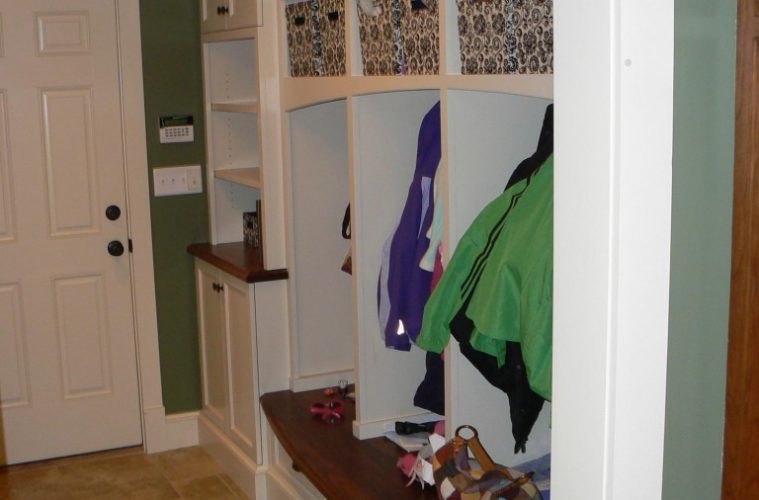Mudroom Madness Making room for life’s comings and goings is a serious challenge, but a savvy remodeling company has some ideas for how to keep the mess to a minimum.
When it comes to remodeling projects, the “mudroom” might not be the very first idea that comes to mind. It certainly isn’t the most glamorous prospect for home improvement, but as it turns out, it can be an incredibly gratifying place to begin. In fact, Susan Howell of Howell Custom Building Group says, “At our company, we have a saying: ‘It always starts with the mudroom.’” And it may very well be something to consider as winter stands at the door.
Homeowners willing to get down and dirty in the mudroom should first compile a list of the things they’d like stored in the space. As Howell points out, “Everything needs to have a place.” Project doers should approach it with a clear “vision” of how the room will present, what functions it will serve, and how it will integrate with the home as a whole; uses of the space should be determined at the get-go. Is the aim to create an organized utility area? Is the room to be something of a foyer meant to make a favorable first impression? Or is the room intended to serve multiple purposes? In addition, does the space need to accommodate the family in the same capacity year-round, or should it be flexible and change with the seasons and offer alternate uses?
Once the mudroom’s purpose has been determined, Howell suggests getting clear on how the functional aspects of the design will work with the demands of that space. She notes some characteristic ways in which mudrooms serve a household:
-
Open cubbies make great catch-all spaces. Homeowners with children can use cubbies as spots for kids to hang jackets, keep schoolwork, and tuck away backpacks.
-
A bench is often stationed for putting shoes on and taking them off; it commonly includes additional storage options.
-
At least one closet is usually present in which things can be stored out of view.
-
A place to stash mail, packages, etc., is desirable.
-
A charging station for cell phones and laptops is a more modern option.
-
For pets, a place to store leashes, food, toys, a bed, etc., is convenient.
Recognizing that the room’s dimensions may be a limiting factor, Howell encourages creativity and optimization. She suggests looking at the “empty spaces” for storage inspiration. The area beneath the stairs can be used to store pullout drawers, wall junctions can hold kitty-corner drawer units, and floor-to-ceiling surfaces lend themselves to fastened shelving. If designed well, Howell says, an effective mudroom is capable of evoking “a feeling of a well-managed life.” To that end, she says, “What is really essential to a [successful] mudroom is knowing [its] demands before it’s even built.” howellcustombuild.com

